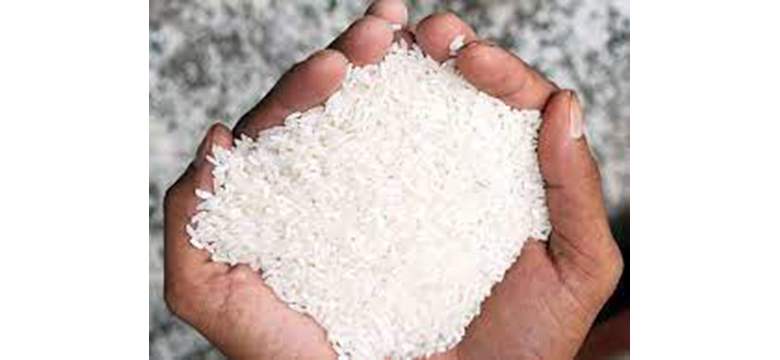Mr & Mrs Aditya Dhar visits Baglamukhi Mata Mandir
Aug 26, 2022

Since India, by far the world's largest exporter, has had a lack of rain in some areas, planting areas for rice have shrunk to their smallest size in almost three years. This could pose a new challenge to the world's food supply.
At a time when nations are struggling with skyrocketing food prices and rife inflation, India's ability to produce rice is in danger. Due to a shortage of rainfall in some areas, particularly West Bengal and Uttar Pradesh, which account for a quarter of India's output, the total area planted with rice has decreased by 13% thus far this season.
Traders are concerned that a decline in rice production could make India's battle against inflation more difficult and lead to export restrictions. For the billions of people who depend on the food staple, such a decision will have significant ramifications. In order to protect food security and maintain local prices, the government has already restricted wheat and sugar exports from India, which accounts for 40% of the world's rice trade.
India's rice prices have increased, which reflects worries over production. Due to insufficient rain and increased demand from Bangladesh, prices of some types have jumped by more than 10% in the past two weeks in major growing states like West Bengal, Odisha, and Chhattisgarh, according to Mukesh Jain, a director of rice shipper Sponge Enterprises Pvt. Export costs could increase to $400 per ton by September from as much as $365 now on a free-on-board basis, he said.
Asia produces and consumes the majority of the world's rice, making it essential for the region's political and economic stability. Rice prices have been moderated as a result of plentiful production and stockpiles, in contrast to the spike in wheat and corn prices following Russia's invasion of Ukraine, which has helped prevent a worsening of the food crisis.
The success of the monsoon and the Indian rice crop will have a significant impact. According to some agricultural specialists, there is still time to plant more crops and make up part of the gap. August through September are expected to have typical rainfall, which could increase crop production.
Farmers have a lower mood. Due to a lack of rain in June and July, according to grower Rajesh Kumar Singh, 54, he was only able to sow rice on half of his seven acres (2.8 hectares) of land. He declared, "The position is absolutely precarious."
Rice prices are feeling the pressure, said Himanshu, a lecturer at Jawaharlal Nehru University, who goes by only one name. The prospect that it will rebound is unrealistic, he said, adding that a decrease in output poses a risk to inflation because very little sowing occurs beyond mid-July.
Rice may provide a new obstacle in India's fight against inflation. This year, consumer prices continued to exceed the Reserve Bank of India's tolerance level of 6 percent, which caused a dramatic increase in interest rates. As the impact of declining commodity prices, such as those for fuel and vegetable oils, is somewhat countered by a weakening rupee this week, the central bank may raise borrowing costs further.
According to Sonal Varma, an economist at Nomura Holdings Inc., persistent spatial differences in rainfall might have a negative effect on crop production, which would then have a negative influence on economic growth and inflation.
With Bangladesh, China, Nepal, and certain Middle Eastern countries among its top clients, India exports rice to more than 100 countries. There are some promising signs for the global food security situation. In the upcoming weeks, the US is expected to produce a bountiful harvest of wheat, and Ukraine has sent its first grain shipment since Russia's invasion.
According to Siraj Hussain, a former secretary of India's agriculture ministry, the government should think about revisiting its strategy of assigning rice for ethanol production as India's paddy crop is expected to fall in various areas.
In an effort to lower its fuel prices, India wants to increase the manufacturing of ethanol using extra sugar and rice. A "food vs fuel" argument has been prompted by the rise in food costs that has followed the conflict in Ukraine.
Hussain stated that it was difficult to determine the precise amount of production loss at this time. However, he continued, there is rarely any reason to allocate rice for ethanol production at the current pricing.